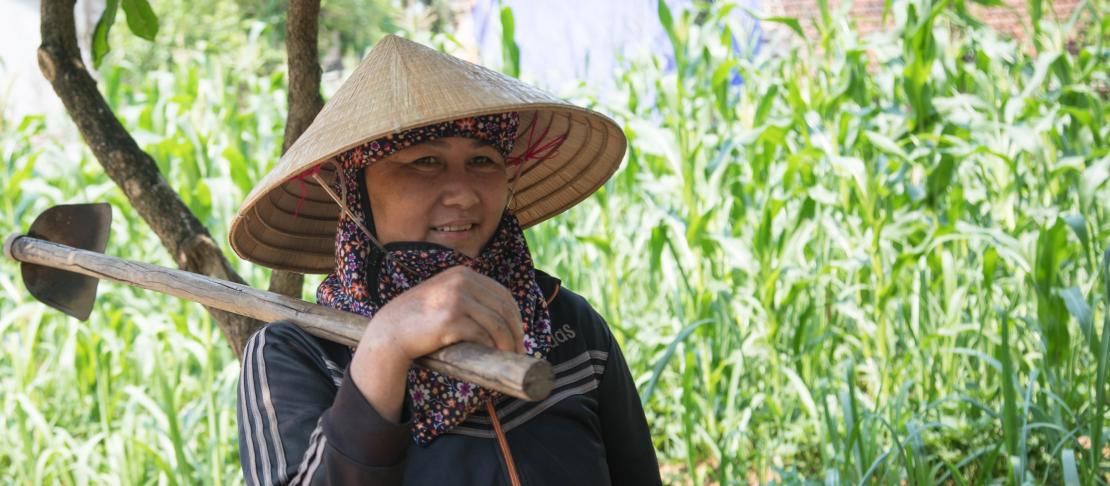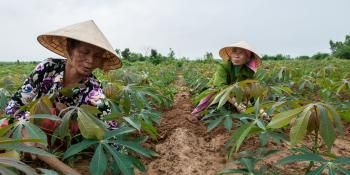Expert forecasts and local knowledge as sources of agro-climate information

Seasonal forecasts and agro-advisories were developed by combining weather forecasts provided by experts and the local knowledge shared by the community in My Loi Climate-Smart Village.
A Participatory Scenario Planning Workshop was organized in My Loi Climate-Smart Village (CSV) in Vietnam in June 2018 to produce forecasts and agro-advisories for the summer-autumn season, which will last from June to November. During the workshop, the participants discussed various issues and the corresponding solutions that they can adopt throughout the summer-autumn season. The outputs of the workshop were both published on the website of Ha Tinh Farmers’ Association and distributed all over the Ky Anh District of Ha Tinh Province, Vietnam.
Short-term varieties
In terms of crops that farmers can plant, the participants recommended short-term varieties of rice. For areas that are exposed to drought, they suggested beans, which they said are another short-term crop and more drought-tolerant than peanut. After planting beans, the farmers can then plant maize and sweet potato or peanut in September in consideration of a weather forecast of storms and heavy rain.
The participants emphasized that rice, beans and peanut be planted once they finish harvesting the previous crops to avoid the impact of drought in June and July as well as heavy rainfall in September and October. Through this planting strategy, they will be able to utilize the remaining moisture in the soil and harvest as early as mid-September.
However, this guidance proved to be a challenge for those who had delayed their planting in the previous season. The participants reminded those farmers to harvest their crops as soon as possible.
Managing pests and diseases; enriching the soil
Pest and diseases (P&D) continue to plague farms. To address this issue, farmers were advised first and foremost to visit their farms regularly to spot any emerging P&D as soon as possible. Preventive measures were identified, which include using bio-pesticides made from garlic, ginger, and alcohol; installing fly traps; and growing insects like ladybugs and yellow ants that prey on pests like aphids.
If the use of pesticides cannot be avoided, farmers were reminded of the “4 rights” principle: right time, right type, right dose, right way.
To fertilize the soil, farmers were advised to add compost made from crop residue and manure as well as lime to the soil to improve its organic matter and to eradicate any existing P&D from the previous seasons. Appropriate times for irrigation were also identified. As recommended during the workshop, the best times would be early morning and late afternoon to avoid stressing the crops with sudden changes in soil temperature.
The workshop was attended by farmer groups in My Loi CSV; farmers in Ky Son commune; representatives of the Department of Agriculture and Rural Development (DARD), local hydro-meteorological station, and farmers’ association; and extension workers from the commune, district, and provincial levels in Ha Tinh Province. It is a part of a project funded by the CGIAR Research Program on Climate Change, Agriculture and Food Security (CCAFS) called the Agricultural Climate Information Service for Women and Farmers in Southeast Asia (ACIS), and is being implemented by the World Agroforestry Centre (ICRAF) and CARE International in Vietnam, Cambodia, and Lao People’s Democratic Republic.
Read more:
- News update: Improved climate services a must for better decision making among farmers
- News update: Do farmers want to pay for climate services?
- News update: Considering gender-differences: The key to effective agro-climatic advisories
Le Thi Tam is a research assistant at the World Agroforestry Centre Vietnam.


